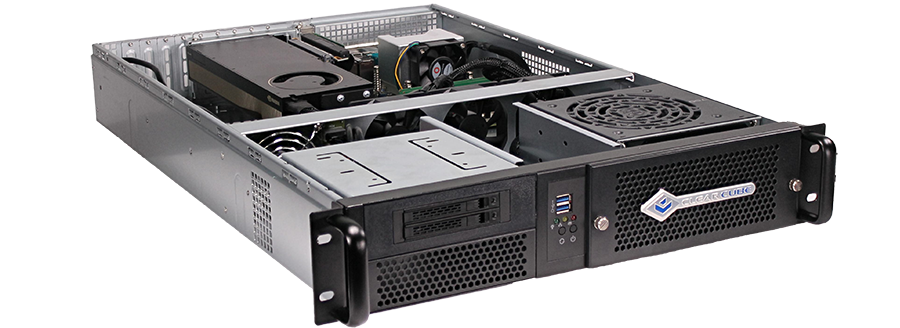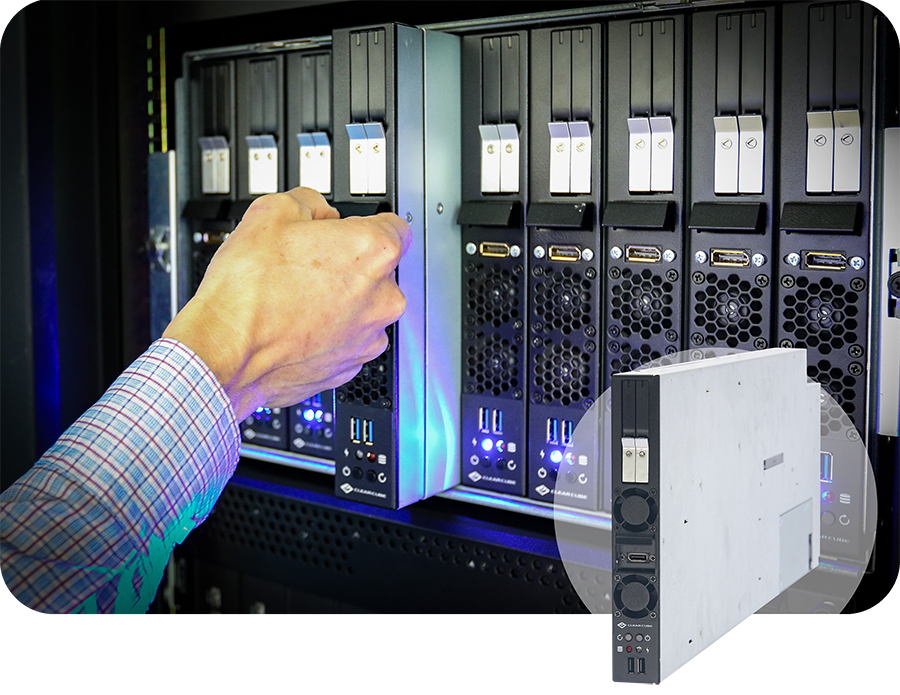ZERO CLIENTS FOR ANY ENVIRONMENT

Data Center & On the Edge
AI Computers

IoT / INDUSTRIAL COMPUTERS
Manufacturing facilities, digital signage, kiosks, and remote mounting, and more.

Rackmount & Blade PCs
– Lower TCO than Subscription-based vGPUs
– Outperforms Virtualized Resources
Productivity-Boosting Performance for Intensive Graphics Users

Budget Models
Easy Manageability
2-4 (and up to 7) Displays
Copper or Fiber
Removable Storage
Fanless and Sealed
Thin Clients & Mini PCs for Scale or Specialized Use

- Budget Models
- Easy Manageability
- 2-4 (and up to 7) Displays
- Copper or Fiber
- Removable Storage
- Fanless & Sealed
Optimizing the Classified Network Workstation for Secure Switching

Maximizing Server Room Density for Non-Virtualized Users

3U, 4U, and 6U Blade PCs
- Density
- Serviceability
- 3U (x8 blades)
- 4U (x10 blades)
- Power Efficiency
- Long-life Reliability
- 6U (x10 blades)
Custom Computers for VR, Immersive Training, & Simulators
Design Requests Welcome

COMPUTER HARDWARE SOLUTIONS
that make IT easier, more efficient, and more secure
ClearCube Technology designs and builds
Endpoint Computers & Remote PC Workstations
Edit Content
for Government & Military
where reliability for critical operations matter
-
Secure KVM/KM Workstations
-
Zero Clients for any environment
-
Rackmount Blade PCs
Edit Content
for Commercial / Healthcare
-
Thin Clients
-
NUC & Mini PCs
-
Rackmount Blade PCs
COMPUTER HARDWARE SOLUTIONS
that make IT easier, more efficient, and more secure
ClearCube Technology designs and builds
Endpoint Computers & Remote PC Workstations
for Government & Military
where reliability for critical operations matter
-
Secure KVM/KM Workstations
-
Zero Clients for any environment
-
Rackmount Blade PCs
for Commercial / Business
-
Thin Clients
-
NUC & Mini PCs
-
Rackmount Blade PCs
Why work with ClearCube?
Your Trusted Partner
Easy to Work with. Excellent pre-sales guidance and technical support. Configuration options to meet your requirements.
Innovating Solutions Since 1997
Unique, problem-solving designs. Multiple patents. Options for large deployments, as well as custom projects
Made & Supported in the USA
In-house design, manufacturing, and customer support.
How to get started with clearCube
In 4 Easy Steps
Step 1
Discuss Your Needs & Requirements
Our dedicated team is here to help in any way possible.
Step 2
Evaluate Suitable Solutions
Evaluate the suitable products and solutions and receive a quote to start the bid/purchase process.
Step 3
Build, Configure & Ship Solutions
We build, custom configure, and ship your computer hardware.
Step 4
Receive & Install with US based support
You receive your equipment, as promised, ready to deploy. We are here to support you.



